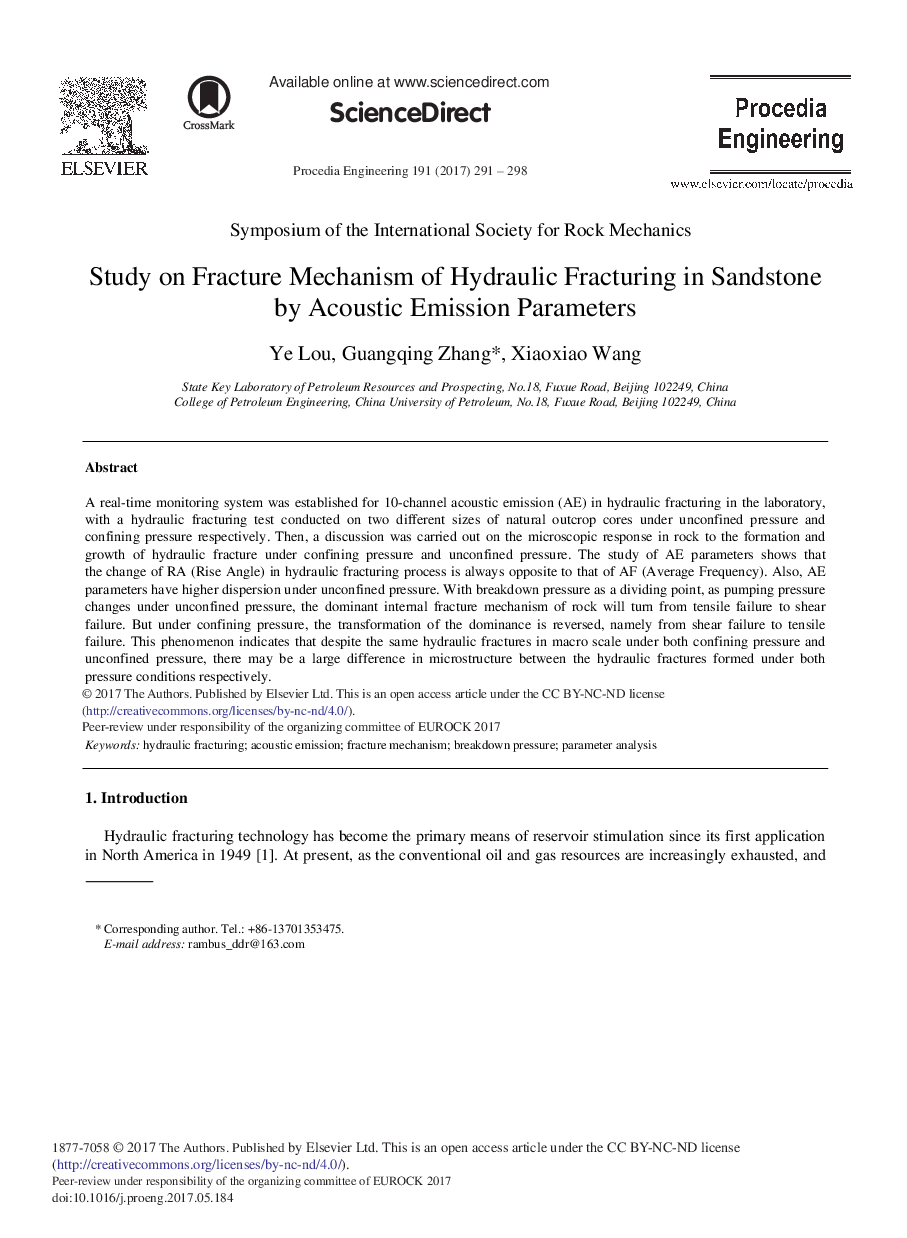| Article ID | Journal | Published Year | Pages | File Type |
|---|---|---|---|---|
| 5027510 | Procedia Engineering | 2017 | 8 Pages |
A real-time monitoring system was established for 10-channel acoustic emission (AE) in hydraulic fracturing in the laboratory, with a hydraulic fracturing test conducted on two different sizes of natural outcrop cores under unconfined pressure and confining pressure respectively. Then, a discussion was carried out on the microscopic response in rock to the formation and growth of hydraulic fracture under confining pressure and unconfined pressure. The study of AE parameters shows that the change of RA (Rise Angle) in hydraulic fracturing process is always opposite to that of AF (Average Frequency). Also, AE parameters have higher dispersion under unconfined pressure. With breakdown pressure as a dividing point, as pumping pressure changes under unconfined pressure, the dominant internal fracture mechanism of rock will turn from tensile failure to shear failure. But under confining pressure, the transformation of the dominance is reversed, namely from shear failure to tensile failure. This phenomenon indicates that despite the same hydraulic fractures in macro scale under both confining pressure and unconfined pressure, there may be a large difference in microstructure between the hydraulic fractures formed under both pressure conditions respectively.
